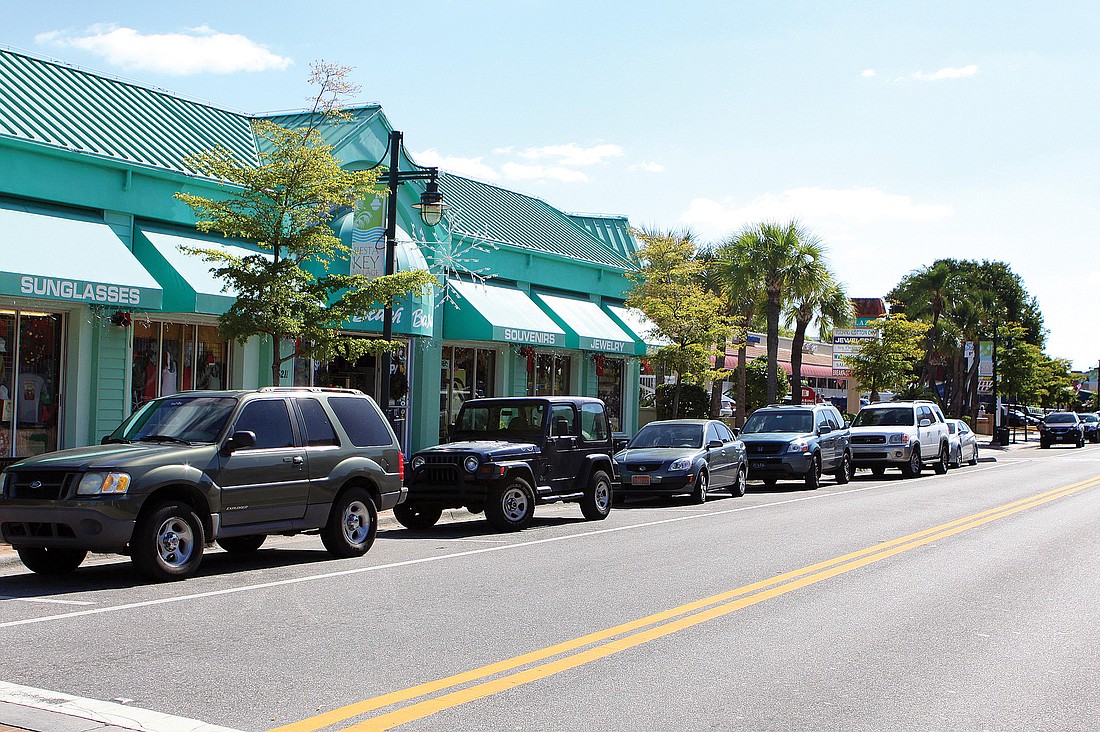- April 15, 2024
-
-
Loading

Loading

While members of the Siesta Key Village Association Tuesday morning showed interest in the idea of electric-vehicle charging stations in the Village, they also were concerned about whether people using the stations would be willing to give up their parking spaces as soon as the charging was completed.
During a presentation by Ken Stokes, an energy consultant with the Sarasota-based company EcoTechnologies, SKVA Treasurer Roz Hyman asked how many parking spaces would be needed per charging station.
After Stokes told her at least two spaces would be necessary, Hyman responded that that could create a problem during season. She questioned whether a driver would move his or her car when no other spots were available.
Stokes told Hyman he believed a driver of an electric vehicle would move the car after finishing the charging.
SKVA President Russell Matthes joked, “Either you’re plugged in, or you’re towed.”
Stokes suggested signage making it clear a vehicle could stay in a space at the station for a maximum of two hours, for example. He acknowledged that parking on Ocean Boulevard is premium parking. However, he cautioned against the towing option.
“What you want to do is make it friendly,” he said. “You don’t want the towing option.”
“But every parking spot in the Village is premium,” Village Café co-owner Kay Kouvatsos said.
“During season, people would pay $1.50 (an hour) for parking,” Siesta Key Chamber of Commerce Executive Director Kevin Cooper said.
Stokes previously had told the members they could require payment for use of the charging station to cover their cost of the electricity. For example, he said, the city of Bradenton was planning to charge $1.50 per hour for its stations.
“I’d rather pay $1.50 an hour than $300 for towing,” Kouvatsos said.
The SKVA would research the matter further, Matthes said, before making a decision.
Earlier in his presentation, Stokes told the 20 people present that the United States has about 200,000 electric vehicles already on the road. By 2040, he said, about 70% of all the vehicles would be electric.
Drivers of electric vehicles use GPS and smart phone technology, he added, to find out where charging stations are located. Therefore, a person driving such a vehicle on Interstate 75, he said, would know if Siesta Village had such a station and even whether it was in use. In fact, Stokes said, a driver could reserve space at the station by using a smart phone app.
If the Village had a charging station, Stokes said, more people may be drawn off the interstate to explore the shops and dine in the restaurants while they charged their cars over a one- or two-hour period.
“What you’re providing is an amenity for the (Village) and attracting people,” Stoke said.
At present, no other business or group on the Key is looking into the option of installing a station, Stokes said. If the SKVA placed one at the gazebo at the intersection of Canal Road and Ocean Boulevard, that would bring a lot of publicity to the Village, he said.
The least expensive type of station, he said, costs between $6,000 and $9,000, plus about $500 for installation. The expense for the electricity, he added, runs about $25 to $30 per month.